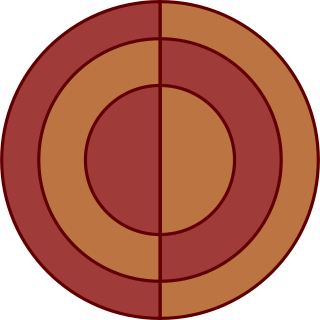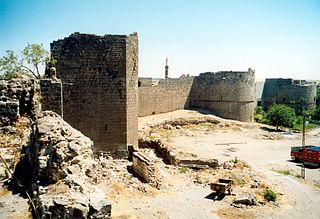 W
WThe equites stablesiani were a class of cavalry in the Late Roman army. They were one of several categories of cavalry unit or vexillatio created between the 260s and 290s as part of a reorganization and expansion of Roman cavalry forces initiated during the reign of Gallienus (260-268). These new cavalry vexillationes typically shared the basic regimental designation equites, and included equites Dalmatae, equites Mauri and equites scutarii.
 W
WThe Jovians and Herculians were the senior palatine imperial guard units under the rule of Diocletian. They continued in existence thereafter as senior units in the field armies of the Western and Eastern Roman Empires.
 W
WLegio I Armeniaca was a pseudocomitatensis legion of the Late Roman Empire. The Legio I Armeniaca was probably founded in the late 3rd century by Julian the Apostate, although it could have been founded by Diocletian It is possible that the name of the legion could mean that it was originally part of the garrison of the Armeniac provinces, but the unit, together with its twin legion II Armeniaca, appears to have been included in the imperial field army. The legion was based in Bezabde until the Persians captured the area in 360. The Legion took part in Julian's invasion of the Sassanid Empire. The Notitia dignitatum records the legion as being under the command of the magister militum per Orientis around 400.
 W
WLegio I Isaura Sagitaria was a pseudocomitatensis Roman legion, the legion was probably created by emperor Probus. It is possible that in the beginning it was used to defend the Isauria region, together with the II and III Isaura. The legion campaigned against the tribes of Cilicia. As its name suggests, its legionaries could be used also as archers, an uncommon feature for Roman legions. According to Notitia Dignitatum, in the beginning of the 5th century the I Isaura was under the command of the Magister Militum per Orientem.
 W
WThe Legio I Maximiana was a comitatensis Roman legion, probably created in the year 296 or 297 by the Emperor Diocletian. The legion was named after Maximianus, a colleague of Diocletian.The I Maximiana was formed together with II Flavia Constantia, to garrison the newly created province Thebaidos, in Aegyptus. As well as protect it from neighboring tribes.The legion is also known as Maximiana Thebanorum or Thebaeorum. Since no Legio I Maximiana is listed as being stationed at Thebes in the Notitia Dignitatum, the designation is interpreted more broadly as of the Thebaid in general. The cognomen Maximiana originated from Maximian, Diocletian's colleague. In 354, I Maximiana was in Thrace, in the neighborhood of Adrianople.Thus it is likely that it fought in the Battle of Adrianople, in 378, when emperor Valens was defeated by Goths. According to Notitia Dignitatum, the I Maximiana Thebanorum was still under Thracian command at the beginning of the 5th century, while the I Maximiana was in Philae, under the dux Thebaidos. There exists also a Theban Legion in the legend of Saint Maurice from the 5th century. According to that tradition, this was a legion from Thebes that was ordered to move by Maximian. Thus it is sometimes related to I Maximiana Thebanorum. However, according to tradition, the Theban Legion of Saint Maurice was martyred in 286, while the I Maximiana was not founded until ten years later.
 W
WThe Legio II Flavia Constantia was a comitatensis Roman legion, created by Diocletian, probably in the year 296 or 297.
 W
WLegio III Diocletiana was a comitatensis Roman legion, levied in 296 by Diocletian, from whom the legion took its name.
 W
WLegio V Iovia was a Roman legion levied by Diocletian in the end of the 3rd century, and was still in service at the beginning of the 5th century. The cognomen of the legion refers to Jupiter, to whom Diocletian was devoted and identified.
 W
WLegio V Parthica was a legion of the Roman Empire garrisoned in Amida, Mesopotamia, established by the Roman emperor Diocletian (284–305), who reorganized the eastern frontier. The legion is described by the historian Ammianus Marcellinus. The cognomen "Parthica" was an archaism, as the Parthian Empire was already replaced by the Sasanian Empire at the time of the establishment of the legion.
 W
WLegio VI Herculia was a Roman legion levied by Diocletian in the end of the 3rd century, and was still in service at the beginning of the 5th century. The cognomen of the legion refers to Hercules, to whom Diocletian's colleague, Maximian, was devoted and identified.